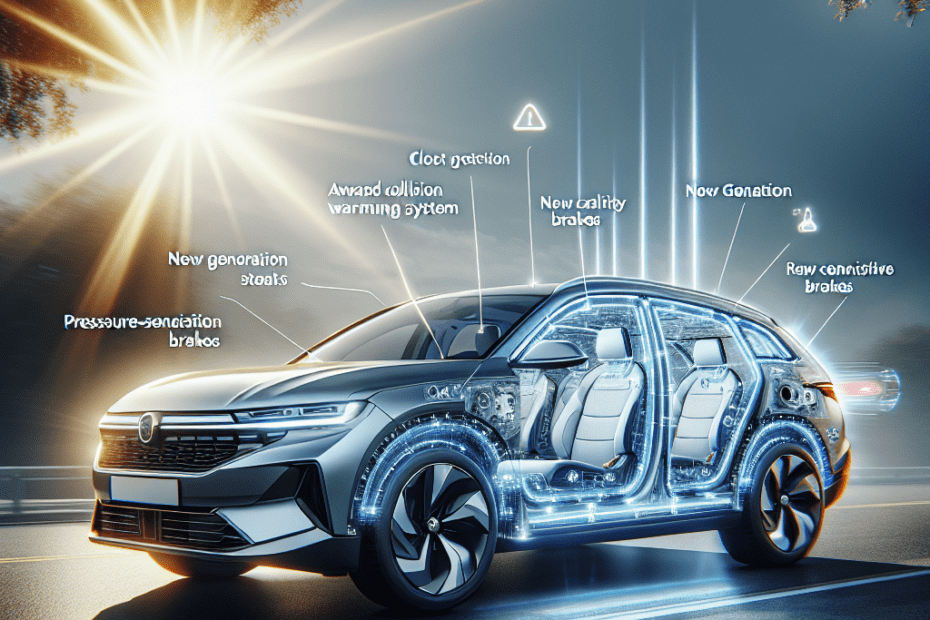Introduction
The roads are bustling with new cars equipped with groundbreaking innovations designed to keep drivers and passengers safe. With technology advancing at a rapid pace, the automotive industry has continually integrated innovative safety features into their latest models. They are not just enhancing comfort and performance but are prioritizing lives by improving vehicle safety like never before.
Collision Prevention Systems
The incorporation of collision prevention systems in modern vehicles marks a significant advancement in automotive safety. These systems utilize a combination of sensors, cameras, and radars to alert drivers of potential accidents. According to the National Highway Traffic Safety Administration (NHTSA), the number of vehicles equipped with these features has reduced front and rear-end collisions by 27% since their introduction. Features such as automatic emergency braking (AEB) and forward collision warning (FCW) have become common components, saving countless lives by preemptively addressing potential hazards.
Blind Spot Detection
Blind spots have long been a challenge for drivers, often leading to serious accidents. With blind spot detection systems, drivers are now more aware of their surroundings. These systems alert drivers about obstacles in their blind spots, providing a safer driving experience. Car manufacturers are increasingly integrating this technology into their vehicles, with 75% of new cars in the United States featuring these systems, as per Kelley Blue Book’s 2021 report.
Adaptive Cruise Control
Adaptive cruise control (ACC) is another innovative automotive technology that contributes to road safety. Unlike traditional cruise control, ACC adjusts the car’s speed in real-time according to the surrounding traffic. By maintaining a safe distance from the vehicle ahead, ACC minimizes the risk of collisions caused by driver inattention or distractions. A study from the Insurance Institute for Highway Safety (IIHS) found that ACC is helping reduce instances of sudden braking, lowering crash rates by 12%.
Lane Departure Warning and Lane Keeping Assist
Unintentional lane departures can lead to disastrous accidents. Lane departure warning systems and lane keeping assist have revolutionized how drivers maintain their lane position. By employing cameras and sensors, these features detect if a vehicle is drifting out of its lane and alert the driver or automatically steer it back. These safety features can significantly reduce the instances of run-off-road accidents and side collisions, enhancing road safety for everyone.
Driver Attention Monitoring
Keeping drivers alert is crucial for preventing accidents. Driver attention monitoring systems are now an integral part of many new cars. These systems use facial recognition or steering patterns to assess driver alertness, thereby warning them if they appear drowsy or distracted. This innovative safety feature ensures that drivers remain vigilant, ultimately reducing the risk of accidents due to fatigue or inattention.
Pedestrian Detection
As urban areas grow and pedestrian traffic increases, pedestrian detection systems have become an important safety feature in new cars. These systems utilize cameras and advanced software to detect individuals near the vehicle and can independently apply brakes to prevent a collision. According to Euro NCAP, cars equipped with pedestrian detection have been shown to reduce pedestrian injuries by 30%, making city streets much safer for everyone.
Advanced Airbag Systems
Modern airbag systems have evolved with technology to offer even greater protection during accidents. These systems, featuring multi-stage deployment and adaptive cushioning, provide optimal safety based on impact severity and crash dynamics. By appropriately adjusting to the situation, these advanced airbags ensure occupants are protected in various accident scenarios, reducing injury severity.
| Innovative Safety Feature | Impact on Safety |
|---|---|
| Collision Prevention Systems | Reduces front/rear-end collisons by 27% |
| Blind Spot Detection | Available in 75% of new cars, enhances situational awareness |
| Adaptive Cruise Control | Reduces sudden braking and crash rates by 12% |
| Lane Keeping Assist | Minimizes lane departure-related accidents |
| Pedestrian Detection | Decreases pedestrian injuries by 30% |
Key Takeaways
- Innovative safety features in vehicles are vital for enhancing road safety and preventing accidents.
- Collision prevention systems and advanced airbags are particularly effective in minimizing impact injuries.
- Technologies like blind spot detection and adaptive cruise control are becoming standard in modern vehicles.
- Driver attention monitoring and pedestrian detection safeguard vulnerable individuals on the road.
- With ongoing advancements, automotive safety is poised to improve further, potentially saving more lives.
Frequently Asked Questions (FAQs)
- What are collision prevention systems?
They are features including sensors and radars that warn drivers about potential accidents and sometimes autonomously apply brakes.
- How does blind spot detection work?
This system uses sensors to alert drivers of objects they cannot see, significantly reducing blind spot accidents.
- Is adaptive cruise control effective?
Yes, it helps maintain safe distances from other vehicles, thus decreasing collisions related to sudden braking.
- What is driver attention monitoring?
It assesses a driver’s awareness using technology like facial recognition, alerting them if they become drowsy or distracted.
- Why is pedestrian detection important?
As pedestrian traffic rises, these systems help prevent collisions by detecting people near the vehicle and taking action when necessary.
